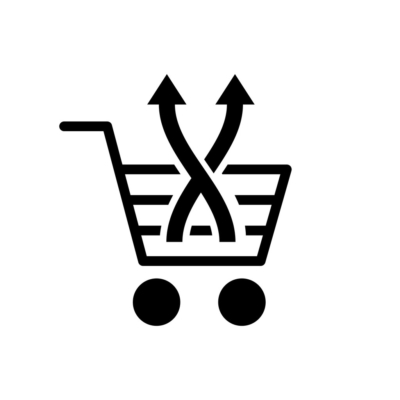Businesses are constantly finding ways to increase sales and boost revenue. Fortunately, there are many levers you can pull to achieve this objective, such as incorporating a cross-sell matrix in your selling strategies. Through cross-selling, businesses can maximize the revenue potential of their customer base, deliver more value to their clients, and foster customer loyalty.
Cross-Sell Matrix Defined
Cross-selling motivates existing customers to purchase additional products that complement or supplement the products they’ve already bought. Creating an effective cross-sell matrix entails utilizing customer data about their decision-making.
By leveraging automation tools and APIs, companies can analyze customer purchase patterns and behavior, enabling them to make personalized recommendations. Outsourcing cross-selling solutions is one way to gain access to technology and powerful data analysis to craft the best cross-sell methods for your business.
What Is the Goal of a Cross-Sell Matrix?
Between 60 and 70% of your sales will likely come from existing customers. By implementing a cross-sell matrix, businesses can enhance customer relationships and increase order revenues. Cross-selling also improves the buying experience and helps retain customers by adding value.
 What Are the Key Advantages of Cross-Selling?
What Are the Key Advantages of Cross-Selling?
A well-implemented cross-selling strategy presents the following benefits for businesses and customers:
1. Increases Customer Loyalty
Cross-selling helps businesses suggest complementary products based on customer purchase data. This selling strategy demonstrates the company’s effort to understand customer needs and maximize their value. As a result, it increases customer satisfaction and loyalty.
2. Boosts Revenues
Retaining your customer base helps your business maintain a steady revenue stream. Meanwhile, cross-selling will increase your customers’ spending on your products and services each time they do business with you. According to industry research by McKinsey, a successful cross-selling strategy increases sales 20% and profits 30%.
3. Reduces Selling Costs & Increases ROI
Acquiring new customers costs five times more than retaining an existing one. Cross-selling can help businesses reduce marketing and selling costs by targeting existing customers instead of reaching out to new ones. Aside from reducing selling costs, it increases the return on investment of the previous marketing efforts implemented to gain your current customers.
4. Enables Promotion of Specific Product Lines
A cross-sell matrix can help your company promote new or underperforming products and increase sales. This strategy entails partnering these products with a suitable offering to highlight their value or enhance the overall customer experience.
5. Improves Customer Convenience
Cross-selling benefits are not limited to businesses; cross-selling also provides customers with convenience and flexibility. By introducing a product that can enhance the value they are getting from your company, you improve customer service and fulfill their needs in one transaction. Moreover, your customers won’t have to shop around if you provide their needs in one place, reducing the risks and hassle of dealing with a new company.
Cross-Selling Matrix Best Practices
Cross-selling is important, but implementing it requires thorough planning and research. Here are some of the industry’s best cross-sell matrix practices:
1. Map the Customer Journey
Regardless of how relevant your offer is, customers are unlikely to take advantage of it if it’s offered at the wrong time. You can identify the best touch points to cross-sell by tracking the customer journey. The best time to cross-sell is while your clients are in the purchasing mindset, while a transaction takes place, or a short time after.
2. Create Complementary Solutions
Many industries present organic opportunities for cross-selling. The tech industry is one example, as software add-ons can supplement different applications. When drafting a sales plan, identify opportunities to enhance customer experience and outline how to incorporate cross-selling tactics into sales efforts.
3. Focus on Providing Value
Understand what your customer needs and the motivation behind their initial purchase. By focusing on providing solutions, you can easily discuss how your complementary products can provide value. This transparency builds trust, proving that your primary focus is helping your customers rather than simply “selling” them additional products.
4. Consider Outsourcing Solutions
Business Intelligence (BI) tools can help businesses better understand their customer’s purchasing habits. Outsourcing allows your company to take advantage of these technologies and access experts. This ensures maximum sales efficiency and allows your company to concentrate on what it does best.
Moreover, it eliminates the additional cost of hiring an in-house sales team. Providers like ROI Solutions combine data analysis, technology, and team training to ensure the quality of their cross-selling methods.
Leverage the Power of Cross-Selling with ROI Solutions
Implementing an effective cross-sell matrix can help your business increase revenue, build customer loyalty and strengthen your unique value proposition. Let ROI Solutions handle this for you. By outsourcing your cross-selling to us, you can take advantage of industry-leading technologies and work with experienced call center professionals. Reach out today to learn more, and find answers to your questions!
